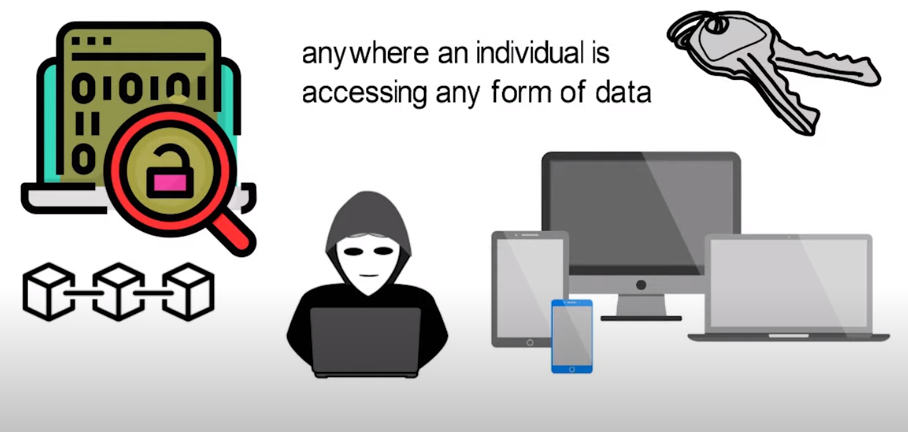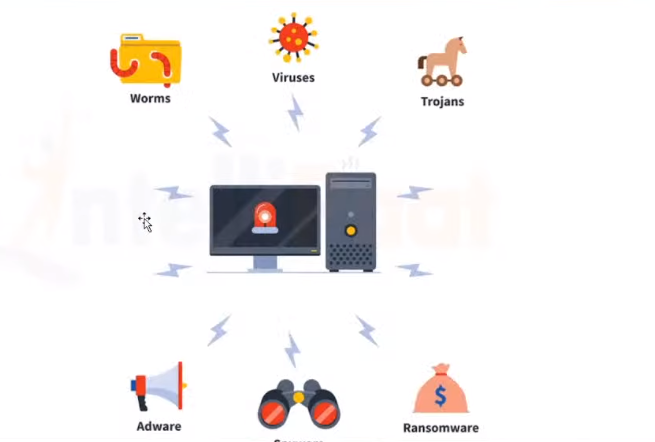Overview of the Importance of Data Security
Data security is of utmost importance in today’s digital age. With the increasing amount of personal and sensitive information being stored and transmitted online, it is crucial to protect this data from unauthorized access, theft, or misuse. Data breaches can have severe consequences, including financial losses, damage to reputation, and legal liabilities. Moreover, cybercriminals are constantly developing new and sophisticated methods to steal data, making it essential for individuals and organizations to stay vigilant and up-to-date with the latest security measures.
Risks of Data Breaches And Cyber Attacks

Data breaches and cyber-attacks pose significant risks to individuals and organizations. Some of the potential consequences include:
1. Financial losses: A data breach can result in significant financial losses for individuals and organizations. This can include direct costs such as legal fees, regulatory fines, and compensation for affected parties, as well as indirect costs such as damage to reputation and loss of business.
2. Damage to reputation: A data breach can damage an organization’s reputation, leading to a loss of trust among customers and partners.
3. Legal consequences: Depending on the type of data that is compromised, an organization may face legal consequences such as lawsuits, regulatory fines, or even criminal charges.
4. Identity theft: When personal information is compromised, it can be used for identity theft, which can have long-lasting and devastating effects on individuals.
5. Business disruption: A data breach can disrupt an organization’s operations, leading to lost productivity and revenue.
6. Loss of intellectual property: If sensitive intellectual property is compromised.
Understanding the Basics of Data Security
Data security is the practice of protecting digital information from unauthorized access, theft, and corruption. It involves implementing measures to prevent data breaches, which can result in the loss or theft of sensitive information. These measures may include encryption, firewalls, password protection, and access controls. Data security is important for individuals and organizations alike. Individuals need to protect their personal information, such as their financial and medical records, from theft and misuse. Organizations need to protect their customers’ personal and financial information, as well.
Types of Data That Need to Be Protected
Several types of data need to be protected, including personal information such as names, addresses, social security numbers, and phone numbers. Financial information, such as credit card numbers and bank account information, also needs to be protected. Medical records, legal documents, and intellectual property are other types of data that require protection. Additionally, confidential business information, such as trade secrets and financial reports, must be safeguarded to prevent unauthorized access and theft.
Assessing Your Data Security Needs
To assess your data security needs, you should first identify the types of data that your organization handles and determine the level of sensitivity of each type. Then, you should evaluate the potential risks and threats that could compromise the confidentiality, integrity, and availability of your data. Next, you should establish security policies and procedures that address access control, data storage and transmission, incident response, and employee training.
Understanding Legal And Regulatory Requirements
To ensure compliance with legal and regulatory requirements, you should research and understand the relevant laws and regulations that apply to your organization and the data you handle. This may include industry-specific regulations or laws such as HIPAA or GDPR, as well as general data protection laws like the California Consumer Privacy Act (CCPA) or the EU General Data Protection Regulation (GDPR). Once you have a clear understanding of the legal and regulatory requirements, you should assess your current practices and procedures to ensure compliance. This may involve implementing additional security measures or updating existing policies and procedures.
It is also important to stay up-to-date on any changes or updates to relevant laws and regulations to ensure ongoing compliance. This may involve regular training and education for employees and regular reviews of your security policies and procedures.
Best Practices for Data Security
- Creating strong passwords
- Using two-factor authentication
- Securing your devices
- Keeping your software up to date
- Enabling encryption
- Backing up your data
- Disposing of data securely
Data Security Tools and Technologies
- Firewall software
- Antivirus software
- Virtual private network (VPN)
- Email encryption
- Cloud security solutions
- Mobile device management (MDM) software
Securing Your Online Presence
- Protecting your social media accounts
- Safeguarding your email
- Avoiding phishing scams
- Keeping your browsing private
- Managing your online identity
Creating a Data Security Plan
Here’s a list of steps you can take to create a data security plan:
1. Identify your sensitive data: Determine what types of data you collect, process, and store that could be considered sensitive, such as financial information, personal data, or trade secrets.
2. Assess the risks: Evaluate the risks that your sensitive data is exposed to, such as cyber-attacks, theft, or accidental disclosure.
3. Define your security policies: Develop policies and procedures to protect your sensitive data.
4. Implement security measures: Implement security measures such as firewalls, encryption, and access controls to protect your sensitive data.
5. Train employees: Train your employees on your security policies and procedures to ensure they understand their role in protecting sensitive data.
6. Monitor and update: Regularly monitor and update your security measures to stay ahead of evolving threats and ensure continued protection of sensitive data.
7. Have a response plan: Develop a response plan in case of a security breach to minimize damage and quickly
Emerging Technologies And Trends In Data Security

Emerging technologies and trends in data security include:
1. Artificial intelligence (AI): AI can be used to detect and prevent cyber attacks by analyzing large amounts of data and identifying patterns that may indicate a threat.
2. Blockchain: Blockchain technology can be used to create secure and transparent data storage and sharing systems that are resistant to tampering or hacking.
3. Multi-factor authentication: Multi-factor authentication adds an extra layer of security by requiring users to provide multiple forms of identification before accessing sensitive data.
Conclusion
In conclusion, there are several ways in which technology can be used to enhance cybersecurity. AI can be used to detect and prevent cyber attacks, blockchain can provide secure data storage and sharing, and multi-factor authentication can add an extra layer of security. By incorporating these technologies into our cybersecurity strategies, we can better protect our sensitive data and prevent cyber threats.
FAQs
What are the common threats to data security?

Common threats to data security include malware, phishing attacks, ransomware, social engineering, insider threats, and unsecured networks or devices. These threats can lead to data breaches, financial losses, and damage to an organization’s reputation. Individuals and organizations need to stay vigilant and implement strong cybersecurity measures to protect against these threats.
What are the best practices for data security?
Some best practices for data security include:
1. Regularly updating software and operating systems to ensure they are secure.
2. Using strong and unique passwords for all accounts and changing them regularly.
3. Encrypting sensitive data to prevent unauthorized access.
4. Backing up important data regularly to prevent data loss in case of a breach or system failure.
5. Limiting access to sensitive data to only those who need it.
6. Educating employees on cybersecurity best practices and conducting regular training sessions.
How can I secure my online presence?

There are several steps you can take to secure your online presence:
1. Use strong and unique passwords for all your online accounts and change them regularly.
2. Enable two-factor authentication for all accounts that offer it.
3. Be cautious when clicking on links or downloading attachments from unknown sources.
4. Keep your software and operating system up-to-date with the latest security patches.
5. Use reputable antivirus and anti-malware software to protect your computer from viruses and malware.
How can I train my employees on data security?
Here are some tips for training your employees on data security:
1. Provide regular training sessions on data security best practices, including password management, email security, and safe browsing habits.
2. Make sure your employees understand the importance of data security and how it relates to the overall success of your business.
3. Create a data security policy that outlines the rules and procedures for handling sensitive data, and make sure all employees are familiar with it.
What should I include in my data security plan?
Your data security plan should include the following components:
1. Risk Assessment: Identify the potential risks to your data and assess the likelihood and potential impact of each risk.
2. Access Control: Define who has access to sensitive data and what level of access they have. Implement strong authentication measures to ensure that only authorized personnel can access sensitive data.
3. Data Protection: Implement measures to protect data in transit and at rest, including encryption, firewalls, and antivirus software.
What is the future of data security?
The future of data security is likely to involve more advanced technologies such as artificial intelligence and machine learning. These technologies can help to identify and respond to potential security threats in real time, as well as automate many of the processes involved in data security. Additionally, there will likely be an increased focus on privacy and data protection regulations, with stricter enforcement and penalties for non-compliance.
